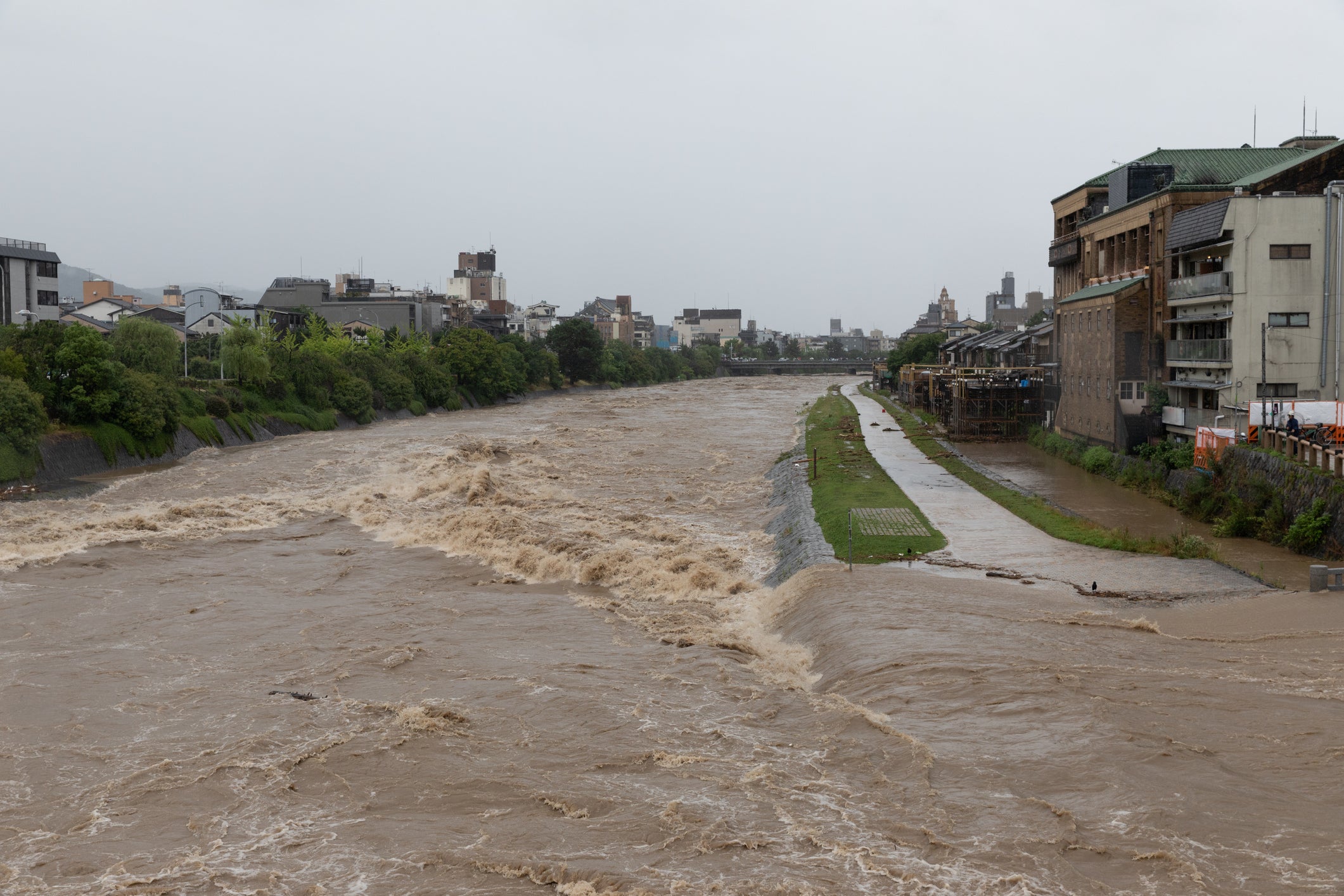Tips for finding contact information for your pet in the event of a disaster
table of contents
Introduction
1. Check official information
2. Check the evacuation center's pet acceptance policy
3. Create a list of animal hospitals and pet hotels
4. Confirm nearby friends and family
5. Preparation of evacuation luggage
6. Confirm route to evacuation site
summary
Introduction
As pet owners, it is our responsibility to find a safe place for our pets to evacuate during a disaster. Pets are part of the family and require proper preparation and planning. Below, we will explain in detail the important points to consider when looking for shelter for your pet during a disaster.
1. Check official information
Gather information about evacuation sites and evacuation plans from official sources, such as local disaster preparedness and animal rescue groups' websites, social media accounts, and local broadcast stations.
1-1 Check local disaster response organizations
Check the websites and contact information of municipal offices and prefectural offices to find evacuation information and evacuation shelter information in the event of a disaster.
1-2 Use information from animal protection organizations
Obtain information on pet-related disaster preparedness from the websites of local animal rescue groups and animal protection organizations.
1-3 Listen to broadcast station information
Receive evacuation information in the event of a disaster from TV and radio stations.
1-4 Follow official SNS accounts
Follow the official SNS accounts of local municipalities, disaster response agencies, and animal protection organizations to get real-time information.
1-5 Utilize disaster apps
Install a disaster information app on your smartphone and prepare to receive evacuation information and shelter information.
1-6 Research local volunteer organizations
Check the information centers and contact information operated by volunteer organizations to obtain pet-related information in the event of a disaster.
1-7 Note the emergency number
Make a note of local emergency numbers and contact information so you can quickly gather information in the event of a disaster.
1-8 Consult in advance
Consult with relevant local organizations about your evacuation plan in advance, and check the evacuation center's acceptance policy and pet care.
2. Check the evacuation center's pet acceptance policy
Check in advance about evacuation shelters and facilities that will accept pets in the event of a disaster. Some shelters may have restrictions on pets, so make sure you understand their acceptance policies.
2-1 Check official information sources for evacuation centers
Check the websites of local municipal offices, prefectural offices, and official pages related to disaster prevention to obtain information about pet acceptance policies at evacuation shelters.
2-2 Acceptable pet types and restrictions
Find out what types of pets the shelter accepts and if there are any size or type restrictions. For example, in addition to dogs and cats, some also accept small animals and birds.
2-3 Check the necessary portable items
Find out if you need to bring any supplies (carry case, leash, food, etc.) needed to care for your pet at the shelter.
2-4 Health status and vaccination requirements
There may be health or vaccination requirements for your pet to be accepted into the shelter. It is important to check your pet's health records and take any necessary steps.
2-5 Care rules in the evacuation center
Review the rules and guidelines for pet care and management within the shelter. There may be rules for smooth living together, such as how to use the toilet and control noise.
2-6 Providing food and water at evacuation centers
Find out what kind of support the shelter will provide with food and water for your pet. Understand if you need to bring anything and what kind of food will be provided.
2-7 Responsibilities of owners and requirements for companionship
At the shelter, owners stay with their pets and are responsible for their care. Check to see if you will be required to bring a companion or if you will be temporarily leaving your pet.
2-8 Period of use of evacuation center
There may be restrictions on the length of your stay at the shelter. If long-term evacuation is necessary, we will contact the evacuation center and consider a plan tailored to the situation.
2-9 Advance reservations and contact methods
Find out how to pre-book or contact a shelter if needed. Advance preparation is required if crowds are expected or special care is required.
3. Create a list of animal hospitals and pet hotels
In the event of a disaster, make a list of evacuation facilities, veterinary hospitals, pet hotels, etc. for pets. This is helpful if the shelter is not accepting pets or if you need special care.
3-1 Research on local animal hospitals
Research and create a list of veterinary hospitals in your area. Gather information through internet searches and your local pet lover community.
3-2 Check reputation and reviews
Research the reputation and reviews of each veterinary hospital and gather information about reliability and quality of care.
3-2 Check equipment and services
Check the facilities and services provided at each veterinary hospital. We carefully check whether we provide a safe and comfortable environment for pets even in the event of a disaster.
3-3 Business hours and emergency response
Check the business hours and emergency response system of a veterinary hospital to determine whether it is a hospital you can rely on in the event of a disaster.
3-4 Access and parking
Check the location of each animal hospital, how to access it, and whether there is a parking lot. Consider whether the location is easily accessible during evacuation.
3-5 Fees and payment methods
Find out about our fee structure and payment methods to make sure you can care for your pet within your budget.
3-6 Research on pet hotels
Similarly, research and create a list of pet hotels and lodging facilities in your area.
3-7 Facility evaluation and user feedback
We check the ratings and user comments for each pet hotel and evaluate its reliability and safety.
3-8 Accommodation and equipment
Check out the pet hotel's accommodations, services provided, play area, etc. to make sure it's a comfortable environment for your pet.
3-9 Reservation and confirmation of available animals
Check how to make a reservation, the types of animals you can accept, size restrictions, etc.
4. Confirm nearby friends and family
Stay in touch with friends, family, and pet lovers in your neighborhood and share your plans for evacuating with your pet in the event of a disaster. By helping each other, it will be easier to find a safe haven.
4-1 Organize contacts
Organize your contact information for nearby friends and family so you can contact them quickly if needed. Write down your phone number and email address or save it on your smartphone.
4-2 Sharing the evacuation plan
Share your disaster evacuation plan with friends and family in advance. We will discuss in detail the evacuation site, what to bring, and how to contact you, including your pet, so that you understand.
4-3 Mutual support agreement
Confirm an agreement to support each other in evacuation, including pets. Ask them to agree to take your pet and provide the care it needs.
4-4 Confirmation of possibility of accompanying
Check with your friends and family to see if they can take their pets in with you in the event of a disaster. We will check whether pets are allowed, taking into account allergies and restrictions.
4-5 Proximity to evacuation site
Compare the location of your shelter with the addresses of friends and family to see how close and accessible it is. It is convenient if a location is chosen that is as close as possible.
4-6 Special care instructions
If your pet requires special care (medications, special diet, etc.), explain this to a friend or family member so they can provide appropriate care.
4-7 How to contact in case of emergency
In case you are unable to contact us in the event of a disaster, check how to contact you in an emergency. It is important to have contact information for your substitute and a pre-determined meeting place.
4-8 Conducting evacuation drills
Conduct evacuation drills with friends and family to practice being prepared and acting in real-life situations. Check how to access the evacuation center and carry your belongings.
5. Preparation of evacuation luggage
Prepare evacuation luggage for your pet. Don't forget to pack essentials such as food, water, medicine, and toilets, as well as your favorite toys and blankets. Preparing your evacuation luggage when evacuating with your pet is important to ensure your pet's safety and comfort. Below, we will explain in detail how to prepare your evacuation luggage.
5-1 Food and water
Bring adequate amounts of food and water for your pet. Prepare food that can be stored for a long time, such as dry food or canned food. Also bring eating utensils and water containers so you can eat and stay hydrated.
5-2 Pharmaceuticals and health supplies
Bring your pet's medications, supplements, and any necessary prescriptions. This is especially important if your pet has a chronic illness or allergies. If necessary, first aid supplies such as bandages, plasters, medicine, and disinfectant will also be available.
5-3 Cage or carrying case
Bring an appropriately sized cage or carrier to provide your pet with safe transportation and peace of mind in the shelter.
5-4 Bed and blankets
Bring a bed or blanket to use as a bed for your pet to ensure a comfortable rest.
5-5 Toilet supplies
For cats, bring cat litter and litter box. We will also provide toilet supplies for your dog if needed.
5-6 Favorite items and safe items
Bring a favorite toy, stuffed animal, or familiar blanket that will make your pet feel safe.
5-7 Leash and harness
Bring a leash and harness to safely transport your pet. It is important to control pets during evacuation.
5-8 Sanitary products
Prepare hygiene products such as wet wipes, soap, and towels for your pet. Ensuring proper care.
5-9 Important documents
Bring copies of important documents such as your pet's health certificate, vaccination records, and registration information.
5-10 Money and important items
Bring important items such as money, credit cards, and ID.
5-11 Other necessities
Don't forget to bring necessary pet items such as collars, tags, licenses, supplies, and pet shampoo.
6. Confirm route to evacuation site
6-1 Consider multiple routes
Consider multiple routes to your evacuation site in advance. One road may be congested or closed, so it's important to consider alternative routes.
6-2 Using maps and navigation apps
Use maps and navigation apps to find the best route to your evacuation site. Real-time traffic information and road conditions can be grasped, which is useful during evacuation.
6-3 Marking of evacuation route
It is helpful to mark your evacuation route on a map or print it out. You can proceed without getting lost even in confusing situations during evacuation.
6-4 Check local road information
Check local traffic information in real time and know about road congestion and road closures in advance.
6-5 Response to special conditions
If you evacuate with your pet, you may need to go through a veterinary hospital or pet hotel. If so, plan the appropriate route and timing.
6-6 Determination of meeting place
If you plan to meet up with family or friends, decide on a meeting place in advance. If you know the location, you can meet up smoothly in an emergency.
6-7 Carrying a road map
Bring a paper road map or atlas, or print it out if you prefer. Useful when electronic devices are unavailable or the battery is dead.
6-8 Confirm local information
Gather up-to-date information and advice by asking locals about routes to evacuation sites and getting information about your neighbourhood.
6-9 Vehicle preparation
If you are evacuating by car, make sure it has the proper amount of fuel and has been inspected. It is important to ensure that your vehicle is in good condition to withstand evacuation.
summary
Research contact information for local animal rescue groups and shelters in advance. Next, share your pet care contact information with nearby friends and family so they can be reached in case of an emergency. Additionally, list your pet's medical information and special requests so they can be provided to shelters and rescue teams. Finally, it is important to have contact information clearly written on the microchip or collar as identification information for your pet. By taking these measures, it will be easier to ensure the safety of your pet in the event of a disaster.








